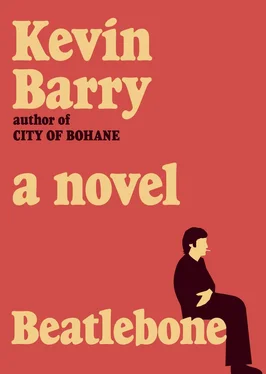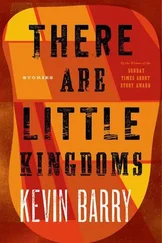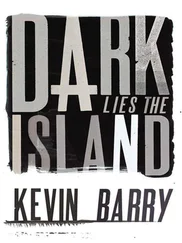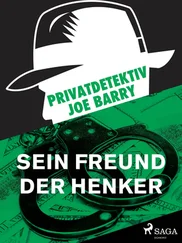I think it’s best now if you just get me to a fucking airport.
Nonsense, John. We are heading for the island.
Part Six. ELEVEN ELEVEN ELEVEN — DAKOTA
At eleven minutes and eleven seconds past eleven o’clock on the morning of November 11th, 2011
— 11.11.11 on 11.11.11—
I stood on the corner of 72nd Street and Central Park West, by the entrance to the Dakota Building, with all the other hunched pilgrims, and it felt like the moment to begin.
It was impossible not to view the scene in a religious aspect: our bowed heads, the air of cathedral hush that pertained even within the city’s yellow-mouthed honk and scurry, the gaudy memorial trinkets for sale across the street in the park. Zola wrote that the road from Lourdes is littered with crutches but not a single wooden leg: miracles, in other words, only go so far, and to feel any true connection or reverb at a site like the Dakota must be so rare as to be miraculous.
The city that morning had the feeling of late summer still. The colours had not caught fire yet in the fields across the park and the trees were almost fully in leaf. Shadows sat heavily to weight an intense, blue-skied clarity, and I drifted in a paranoid sea of numerological speculation. To search for hidden patterns in the arrangement of numbers — in ones, or in elevens, or in nines — is symptomatic of at least a mild disintegration, and I was not unaware of the fact.
I was operating at the usual deep thrum of anxiety and fretfulness. I was worried about both the feeds for my material and how I might subsequently arrange it. But the fact I was worried at least signalled that the work had begun.
I took out a pad and began to make a sketch of the scene. The building itself is a Gotham folly, with dark stones, sombre turrets and an air of bespooked Victoriana, and as I drew I tried to imagine within it occult dreams, and the view across the trees, say on the night of a spring gale, in the soak of an insomniac sweat, as the trees shake out their fearful limbs, and the green shimmers of the treetop faeries move like gasses through the dark. The fact that I am myself tuned to occult frequencies — and frankly I have come to a point in my life where this is no longer deniable — felt like half the battle, but still I had a nagging worry at the edges of my thought, and it was this:
If I was going to make beatlebone everything it should be, I needed to get to the island.
——
Clew Bay is a flooded valley — its many tiny islands are merely a scattered range of drumlin hills submerged at their bases by some unimaginably violent deluge. (Geology: slow, slow, slow, and then quick.) There are certainly not, as the happy legend suggests, three hundred and sixty-five islands; perhaps there are half that number. The knuckle of Croagh Patrick, the pilgrim mountain, rises on the southside of the bay; to the north lies the Nephin range of County Mayo, which has an ominous air; if ever mountains can be said to brood , the Nephin mountains brood. On a lit, clear morning, Clew Bay is an infinitely beautiful place — especially if it is seen from a height above Mulranny, with a springtime light coming slantwise to pick out and give definition to the islands’ shapes — but more often than not the Atlantic clouds swarm in from the west, moving like an invading force, or a slow disease, and the view is uncertain and shifts; the islands appear to come and go in the mist. Among the islands are Freaghillanluggagh and Gobfadda and Mauherillan. There is a Kid Island, a Rabbit Island, a Calf Island. Dorinish is in fact a pair of islands — Dorinish Beg and Dorinish More — linked by a rocky causeway. The local pronounciation would be closer to “Dur-nish” than “Dor-in-ish.” In the 1970s and 1980s this place was known colloquially as Beatle Island.
——
I spent much of the winter watching clips from television interviews with John Lennon, mostly from American talk shows in the 1970s, and I replayed the same lines over and over again as I made rough drafts for voice and tried to get a fix on the intonation.
From our time and perspective, there is already an antique note to his phrasing and tone. There are verbal tics redolent of 1960s cool — many sentences end with a breezy “yunno?”—but these are concurrent with words and formulations — and a kind of pinched melody, actually, almost Larkinesque — that sound like they come from an older England, the England of austere lower-middle-class life in the war years and thereafter. He is suburban. He is a child of the early 1940s, and thus the tentacles of his concern will reach for a time still further back: a shadow-time such as immediately precedes all of our births, the time of the dead love stories, which is such a heavy time. He is quite nasal and often defensive. There is a haughtiness that can be almost princely but his moods are capricious — sometimes he is very charming and funny and light; at other times there is a darkness evident, and an impatience that can bleed almost into bitterness. He can transition from fluffy to spiky very quickly, even within the course of the same sentence. Often during these interviews he was accompanied by Yoko Ono, who very clearly, from this distance, was the tethering fix in his life; lacking her presence, you get the feeling that he might have unspooled altogether.
——
In the spring of 1967, an advert appeared in a London evening newspaper offering an island for sale off the west coast of Ireland. Dorinish was owned by the Westport Harbour Board in County Mayo. It was used mostly for its rocks, which were harvested for ballast by the local fishing fleet. The listed guide price was £1,700 sterling. John Lennon had for a long while dreamed about an island place. He was shown the advert and was taken with the notion.
The cliffs of Dorinish rise against the Atlantic in a way that naturally provides a buttressing effect against the prevailing winds and gives protection to the island’s grasses, which retain their essential nutrients. The pasture here is perhaps the best to be had anywhere on Clew Bay and so it was that a crowd of thirty or forty interested sheep farmers were in attendance when Alistair Taylor, a trusted member of the Beatles’ retinue, showed up at the auction in Westport.
It would not be difficult here to sketch a scene of comic incongruity — a beflared record company freak with hashish eyes amid the slurried ranks — and it’s true that the agricultural west of Ireland in 1967 would have been a distance of decades rather than miles from psychedelic London. But in fact Taylor was short-haired, respectable, besuited, a former Liverpool docker who had worked for the late Beatles manager, Brian Epstein, and who had for a long while been trusted by the band — they called him “Mr. Fix-It.”
In 1964, he had been involved with an attempt to buy Trinity Island, off the Greek coast, for all four Beatles, but the deal fell through. Just a few months before the Dorinish auction, he co-ordinated an attempt to buy the island of Leslo, also off the coast of Greece, and again for the band as a whole — the plan was that the Beatles and their familes would live on Leslo adrift from the everyday world and its dreary, non-psychedelic concerns. A live-work-play structure, modelled on Crystal Palace, was to be built at the centre of Leslo with avenues leading from it to private quarters for each band member. This deal also fell through, but not before the band and their wives and girlfriends visited Leslo on a chartered yacht. John and George spent the greater part of the voyage squatting on the foredeck under the influence of hallucinogens and ukuleles.
Precise details of the Westport auction have not been unearthed, and we do not know the extent of rival bids, but we know that Alistair Taylor returned to London having efficiently secured Dorinish Island for John Lennon at the knockdown price of £1,550 sterling.
Читать дальше












